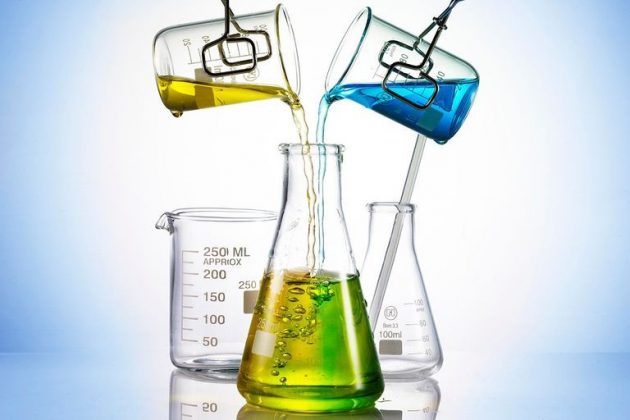As the world continues to battle the deadly coronavirus, the chemical industry has risen to the occasion and is helping to keep the warriors at the frontline safe by supplying hand sanitizers, disinfectants, and PPEs. The alacrity and agility with which the industry is responding to the COVID pandemic is something to be very proud of.
Hands of Care
As the COVID19 pandemic rages relentlessly through our world, new rules are getting written to govern our daily lives. Among them is the practice of frequent hand-washing, which was widely regarded as an Obsessive Compulsive Disorder.
We are being brainwashed into frequent and extended hand-washing by celebrities, virologists, and politicians through creative memes on social media. Hand hygiene has emerged as an important weapon in our battle against the very contagious coronavirus. If we were to tell tales of these extraordinary times to generations not born yet,
hand-washing rituals will dominateour narratives.
Hand-washing
Though people have been washing their hands for more than a thousand years as part of religious rituals, washing specifically for reasons of hygiene is only about 130 years old. It all began in 1846, at the maternity ward of a hospital in Vienna. Doctors and medical students used to shuttle between performing autopsies and delivering babies without washing Hungarian doctor, identified this as the cause of the high mortality rate in the maternity ward. He imposed the practice of hand-washing with chlorine bleach, after which the mortality rate fell dramatically. But Semmelweis was hounded for this improvement and he died a broken man in a psychiatric institution at the young age of 47.
Hand sanitizer
Though the disinfecting properties of alcohol have been known for hundreds of years, hand sanitizers as we know today dates back to the 1960s. There is an apocryphal story that was invented by a nursing student in California. The earliest documented reference of the development of an alcohol-based hand rub credits it to Peter Kalmar, a surgical assistant at the University Medical Centre in Hamburg. The first bottles of hand sanitizer were marketed under the brand name of Sterillium in June 1965. WHO’s sustained global campaign on hand hygiene led to the widespread adoption and popularity of the hand sanitizer.
Exploding Demand
And now the rampaging coronavirus has brought the hand sanitizer to center-stage and made it ubiquitous. It has been estimated that the demand for hand-disinfectants exploded by 1400% from December 2019 to February 2020. They have vanished from every shelf in every store across the world. The demand for hand sanitizers continues to grow, even outstripping the rate at which the virus infects people. Before the advent of the coronavirus, the global production of hand sanitizers was 3 billion liters per year. Now, WHO estimates that we need 3 billion liters per month to fight the pandemic. As the world prepares for a long and exhausting battle against the contagious coronavirus, the hand sanitizer will be at the forefront, preventing the infection from spreading among the corona-warriors – nurses, doctors, and other healthcare workers. Hand sanitizer has become essential for life.
Chemical Industry
As the demand for hand sanitizers surged week to week, the chemical industry quickly got into the act. Many chemical companies repurposed their existing production facilities to manufacture hand sanitizers. Some even announced setting up new facilities to manufacture the precious commodity. BASF diverted several tonnes of Isopropanol to manufacture hand sanitizers at its Ludwigschafen site. Much of its production is being supplied free of charge to hospitals in Germany. Ineos, a leading European manufacturer of Ethanol and Isopropanol, built four new facilities in a matter of a few days in the UK, France, and Germany to produce hand sanitizers. The plant at Lavera, France to produce one million bottles per month was assembled and started up in a mere 10 days. The Hungarian company MOL converted a windshield washer production facility to produce 50,000 liters/day of hand sanitizer. The conversion and obtaining the requisite approvals were managed in a record time of 2 weeks.
The list of companies currently producing hand sanitizers reads like a who’s who of the chemical industry.
Supply Chain
The explosive surge in the demand for sanitizers has exposed the chinks in the supply chain for this rather mundane product. The key ingredients for the hand rubs are ethanol and isopropanol, both of which are coming under intense supply crunch. China, the world’s
leading producer of isopropanol, is in the process of opening up after weeks of closing down. France, another leading producer, has banned all exports of isopropanol. Prices of isopropanol have tripled in the last month. With isopropanol all but disappearing from the markets, sanitizer producers are turning to ethanol. Potable alcohol companies have been roped to strengthen the supply chain. In a cruel twist of irony, the Indian government has ordered that reserves of rice be used to brew alcohol. But in the USA, ethanol plants are shutting down, because of the low demand for blending with gasoline. US FDA has been rather reluctant to approve the use of fuelgrade ethanol for use as a disinfecting agent.
Regulatory Approvals
The enthusiasm of numerous chemical companies to manufacture hand sanitizers has been
matched pragmatically by the regulators. In Europe, hand and surface disinfectants are covered under the Biocidal Products Regulation (BPR). However, the BPR has a provision, Article 55, to waive off approvals in the event of a public health emergency. Many countries in Europe have invoked this mechanism to initiate production and marketing of disinfectants that comply with generic formulations of WHO. US EPA also announced that it will temporarily allow manufacturers of disinfectants to source active ingredients from any supplier without obtaining prior permits from the agency.
Essential Industry
Hand sanitizers are not the only product through which the chemical industry is contributing to the war against coronavirus. Specialty plastics and polymers are being churned out in increasing quantities towards face masks, PPE, disinfecting wipes, etc. DuPont has launched a new initiative to increase the supply of protective apparel made out of Tyvek, a spunbonded fabric made from polyethylene fibers. The company has nearly doubled its production capacity of the fabric and plans to deliver 6 million gowns per month to protect the frontline healthcare workers. DuPont provides designs and patterns that are optimized for easy and accelerated manufacturing of gowns from Tyvek. Meanwhile, in the US, the chemical industry received a terrific boost by being declared as “Essential Critical Infrastructure” by the Department of Homeland Security. The DHS said that the chemical industry has a special responsibility to maintain the work schedule while following guidelines on workforce and customer protection. This is a shot in the arm for the chemical industry, which has endured decades of negative public perception The alacrity and agility with which the chemical industry is responding to the COVID19 pandemic are very heartwarming. Those in the frontline of the war against coronavirus can rest assured that they are in the caring hands of the chemical industry.
Readers’ responses may be sent to:
k.sahasranaman@gmail.com or
chemindigest@gmail.com
































